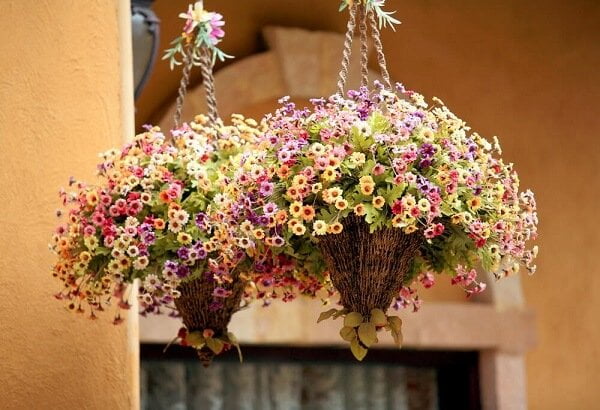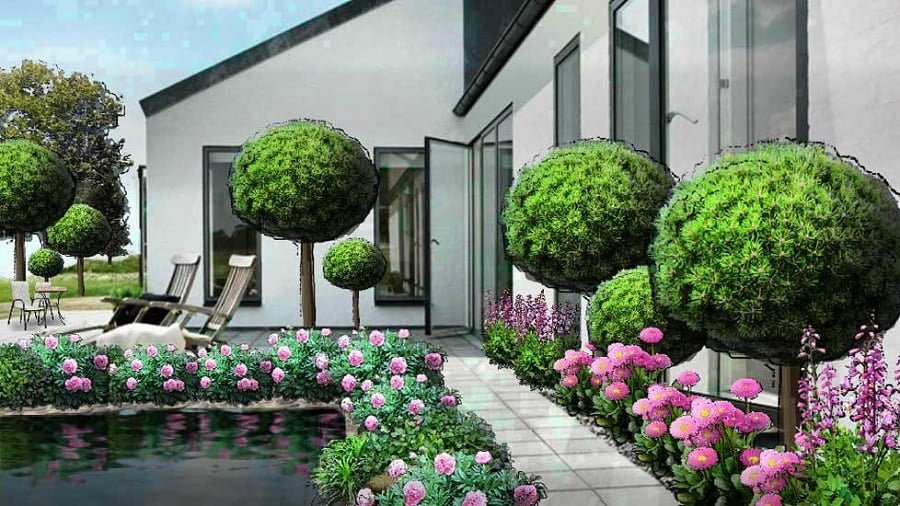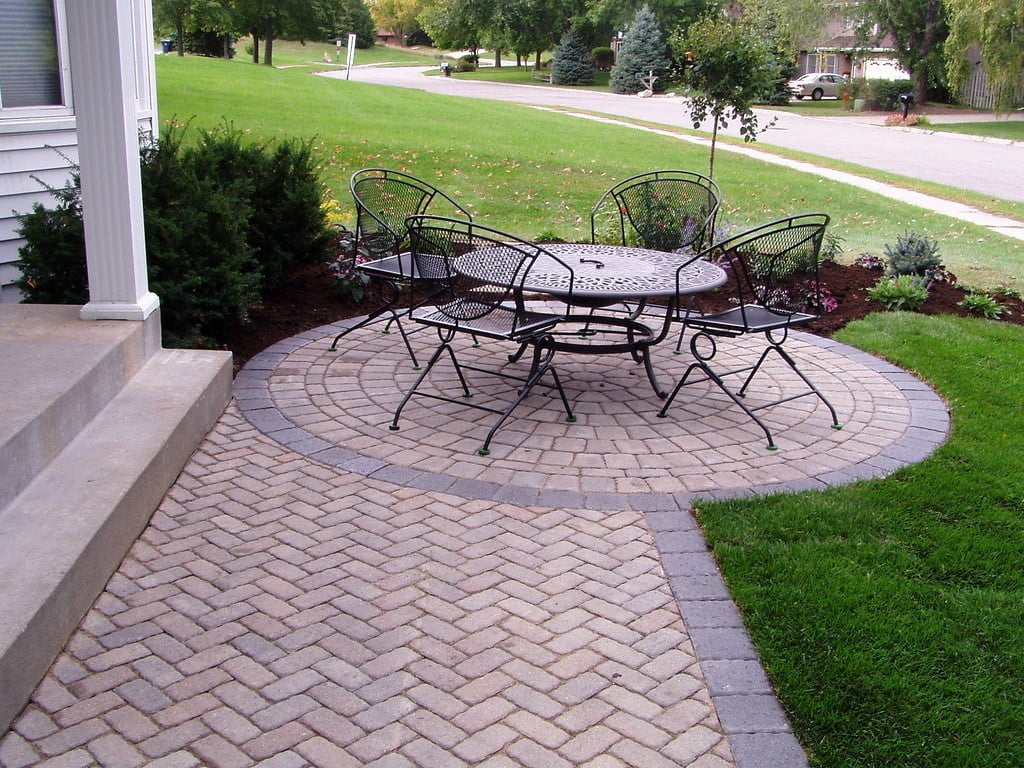Planting on a Slope 101
1. Build a Terrace
Let’s take the case in which the slope is already there. In this situation, you will need to build a small terrace or a flat area at some point on the slope. If you already know what tree or shrub you want to plant, then the flat area should be 3x the diameter of the root ball of the tree. First, you need to cut into the hillside if you want to create the terrace. Alternatively, you can build out of the slope. You may need to employ some rocks or a retaining wall in this case. Finally, you can mix both techniques. What you need to remember when planting on a slope is the fact that the less you disturb the soil, the more stable the slope will be. It’s important that the finished terrace will be firm enough to stand on while you work on it.2. Plant Your Tree or Shrub
After you make sure that you have a flat spot, plant the tree or the shrub you want. It’s important to plant the tree upright and vertical. Make sure the root ball is placed at the right planting depth. The planting hole should be found next to the center of the terrace. Try to leave the soil undisturbed on the downhill part. This helps you avoid some of the problems:- In case the plant is found close to the top of the slope, it may get buried by soil or the debris that will tumble down the hill;
- On the other hand, if the plant is found too close to the bottom edge, in time, erosion may expose the roots.
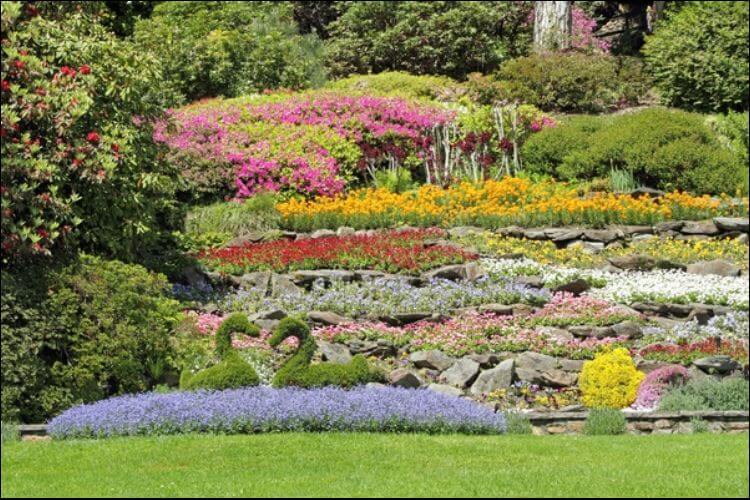
3. Create a Berm
While you backfill around the tree or shrub you want, place the extra dirt on the downhill side. In this way, you can create a small berm to catch the water that will run down the slope. However, make sure the extra dirt doesn’t pile directly on the root ball. Instead, you should create the shape of half of a donut around the plant.4. Use Mulch
Place 2 – 3 inches of mulch around the tree/shrub. When planting on a slope, the mulch will hold the dirt, as well as the berm, in place. Keep the mulch a couple of inches away from the trunk. An alternative would be to set a layer of landscape fabric or a mesh. Use garden staples to hold it firmly in place. Be careful and choose non-slippery landscape fabric, so the mulch will not slide off.5. Water the Plant
Next, you need to water the tree or the shrub to settle the soil. If there are any problems that appear after the watering, solve them. Make sure that the planting is stable.6. Monitor the Plant
It’s important to keep an eye on the plant even after you’re done planting on a slope. Keep an eye on the shrub or the tree for a couple of months. Make sure that the soil settles properly, the water is captured rightly, and the roots are set. It’s important for the roots not to be buried by the falling debris. The berm should stay in place at least for a year or two when the plant will be established. If you need to help it hold the water, reapply mulch whenever needed.
Planting on a Slope – How to Choose the Plants?
Now that you know how to tend to the slope, it’s time to think of what you can plant there. Let’s see a couple of tips on this topic:1. Don’t Use One Type of Plant
A uniform look doesn’t really match the aspect of a slope. It tends to highlight any flaws you may have, like weeds or dead pants. Ideally, you should fill the hillside with a mix of plant types: from shrubs, trees, and ground covers, to perennials, for instance. In this way, you can create an interesting garden that will also diffuse the rainwater on the slope. If you want to obtain a low-height garden, you can go for a mix of ground covers that bloom at different moments. Let the plants fight between them for space, and you’ll have an area filled with flourishing plants.2. But What Types of Plants to Choose?
As we mentioned earlier, when planting on a slope, it’s better to go for ground covers that form a mat. Here you have some other options:- Clumping plants – those that make several stems from a single root;
- Deep-rooted plants – resist even on the steepest slopes (prairie plants);
- Ornamental grasses, ground cover shrubs, and roses – best for planting on a slope or hillside;
- Native plants.
3. Using Wildflowers
Drifts of wildflowers are suitable for a slope since they create a multi-season interest, plus they are easy to care for. If you want them to create a garden that sows itself, you must mow or cut down the stems after they go to seed. Usually, this happens after a hard freeze in colder regions. During the first 1 – 2 years, until the plants settle, it’s essential to weed them. This means that the slope you plant them on shouldn’t be so steep to prevent you from having easy access to your pants. When you’re sowing wildflowers from the seed, you should spend your money on a quality seed mix, which guarantees you’ll have fewer weed seeds.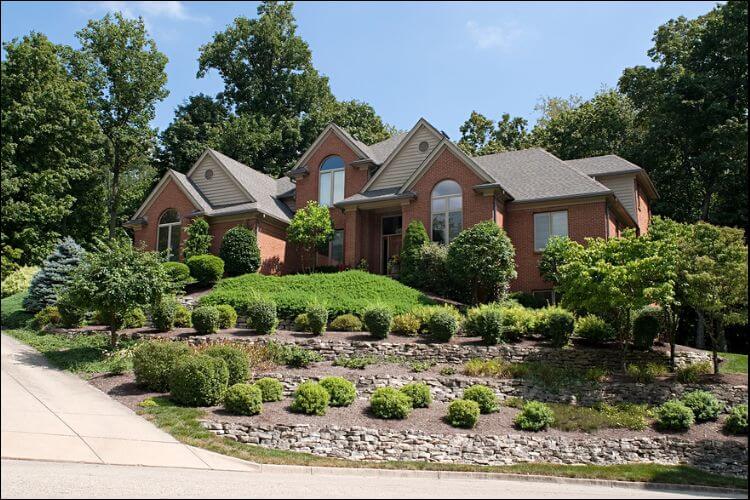
4. No-Mow Grasses
It’s rather hard to mow the lawn you planted on a slope, which is why you should think of a variety that doesn’t need mowing. If you’re not sure about it, you can inquire at your local nursery. See if there are any varieties of the buffalo or Bermuda grass that will survive in your area. Moreover, you can ask if there any fine-leaf fescue options for your region that don’t need mowing.5. Planting Turf on Less Steep Slopes
However, if your slope is not that steep, you can still plant some turf that requires mowing. Generally, you shouldn’t mow turf on a slope that has less than 10 feet in width and is steeper than 25%. However, the real problem with growing turf on a slope is watering it. This is important to keep in mind if you live in an area with dry summers. The water you apply will run downhill, so you can waste a lot of it.6. What Plants Should You Avoid?
What you should totally avoid are the invasive plants, such as:- Scotch broom;
- Virginia creeper;
- Crown vetch;
- Japanese barberry, etc.
- English ivy;
- Vinca;
- Ajuga;
- Liriope, etc.

7. Soil Recommendations
There are plenty of types of soil you can use, but you need to pay attention to the inclination of the slope. This is important because it affects the water circuit and the draining as well. The better the draining, the more you avoid root disease and keep weeds at bay. Regarding the watering, after planting you should do it with a gentle sprinkler. However, if you’re planting in a small area, you should do just fine with plastic bags. Fill them with water and place them next to individual plants. Make a pinprick at the base, to make sure the root zone will be soaked.8. Using Fertilizer
In general, it’s a good idea to use a general fertilizer. This will help your plants grow and thrive on your slope. Do this every year at the beginning of spring.Can I Use a Chainsaw for Landscaping on an Inclined Land?
When it comes to landscaping on an inclined land, using a chainsaw can be a helpful tool. There are various ways to use chainsaw in backyard projects like cutting tree branches, trimming shrubs, or removing unwanted vegetation. However, it’s vital to prioritize safety by following proper guidelines and wearing necessary protective gear.
9. Other Plants Suggestions
In case you don’t know what else to use for planting on a slope, here you have a brief list of suggestions:- Fragrant Sumac;
- California Lilac;
- Burning Bush;
- Japanese Yew;
- Siberian Carpet Cypress;
- Snowberry;
- Dwarf Forsythia;
- Creeping Juniper;
- Cotoneaster;
- Rockrose;
- Creeping Myoporum;
- Prostrate Rosemary;
- Vinca;
- Dwarf Coyote Bush;
- Kinnikinnik;
- Japanese Pachysandra;
- Beach Strawberry;
- Little Bluestem;
- Red Fescue;
- Canada Wildrye;
- Switchgrass;
- Russian Sage;
- Roses;
- Violets;
- Daylilies;
- Deadnettle;
- Spring bulbs;
- Coneflower;
- Prairie dropseed;
- Rattlesnake master;
- Catmint;
- Shrubby cinquefoil;
- Star jasmine;
- Astilbe, etc.







